The winners.
The crowd loved them.
Seven teams competed dancing traditional themes.
This team was dazzling but not the winner.
Dancers galore.
I can still hear the drums.
The peek-a-boo champ.
She sat in front of us with wide-eyed stares and smiles. Brad's beard confounded her.
The drummers between sets.
They drummed for four hours, with only this rest.
The drum leader.
Dressed in full regalia (and women's traditional dress) this drum leader brought out the best in his band.
The Queen.
We don't know how she was selected; but she was carried into the dance hall by eight husky attendants, inside a canoe.
The sacred blue eyed eels.
These eels are very scary looking but have been considered sacred. No danger of ending up as fresh water sushi. The local mythology suggests that the eels brought fresh water to the island.
Green meets blue. The foliage is exquisitely green.
The water varies from azure to royal to deepest blue hues, sometimes in layers.
Huahini has an airport and well paved roads. And gorgeous views from every corner.
We took a road trip with our friends from Baraka. Friends bicycled around the entire island in about four hours. So beautiful.
Huahini is a magical combination of old and new.
This is a storage shed near a well tended archeological site.
Opunohu Bay
Considered by our friend Nancy Erley to be her favorite anchorage in the world, we must concur. As we sit at anchor the water around us is the color of a swimming pool.
These beauties grow unattended along the roadside.
The first settlers came to these islands from southeast Asia if you believe some archeologists, and from Peru if you prefer Thor Heyerdahl's account. Either way, they must have been pleased after months at sea to find these gardens already in bloom.
Barbara Kingsolver would love this.
One of my favorite authors is Barbara Kingsolver, and her recent book Animal, Vegetable, Miracle is a favorite onboard Pax. It's circulated to many boats, we have multiple copies. I believe Ms. Kingsolver would heartily approve of these contented Moorean cows knee deep in green pastures.
We anchored in azure blue water, so clear we can see the bottom along with our anchor chain.
We didn't realize we had anchored within reach of the local kids' sailing school. Our boat became one of the rounding point for the race, with much hilarity and waves from the young sailors.
More wildflowers.
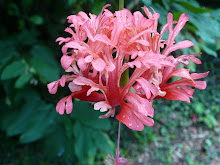
Many of our favorite new sailing friends from Europe, the US, and Canada are sporting fine new tattoos having been impressed by the Marquesasian and Tahitian traditions of tattoo artistry. Although I am willing to accompany my friends to the tattoo parlor door, I preferred to take photos outside instead. These grow wild around Moorea.
Spires from Opunohu Bay
Moorea is deliciously green and unspoiled.
Rays and sharks at Moorea -- July 7, 2008
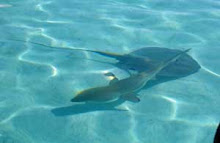
At one point we had eighteen rays around. When fifteen small sharks joined the fun we decided it was enough. Back in the dinghy for us. Thanks to Tom and Dawn from the NW boat Warm Rain for the photos.
Only 10 miles from Tahiti, Moorea is known as a honeymooner's paradise.
These overwater bungalows go for over $1000 per night. We're happy to be on board the boat where we're over the water every night.
Swimming with the rays
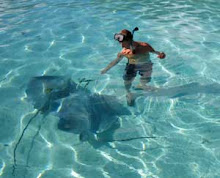
Here's our friend Dave from the Seattle boat Baraka who took us swimming with sting rays. He's feeding the rays canned sardines. The rays feel like rubber as they rub against us.
Tahiti welcomes cruisers.
Thanks to Latitude 38, Tahiti and Moorea shared a day of music and dancing with the sailing community.
Approaching the Island of Moorea
Mountains, lagoons, reefs, and warm weather. And lush green hillsides. Very nice.
Girls' choice.
The Captain's sailing prowess was recognized and rewarded.
Beautiful dancers, great music.
A local dance group shared their skills and culture with us.
Pax Vobiscum is a cruising boat, not a racing boat.
But given a chance and an able captain, Pax jumped to the head of the pack and was in second place when the race was called for lack of wind.
The sailing magazine Latitude 38 co-sponsored a Tahiti to Moorea sailing rendezvous.
A lovely place to sail, and the beginning of the race from Tahiti to Moorea.
Winter Solstice - Tahiti
Papeete - June 22, 2008
We arrived in Papeete, Tahiti, the capital of French Polynesia, on Thursday morning. Two very squally days at sea from Toau atoll left us off the main pass through the barrier reef into Papeete about an hour before dawn. We hove to waiting for daylight, and it began to rain once more. We waited for two hours for the downpour to end, and at 8 AM we motored through the reef into Papeete Harbor and then we continued inside the reef past the main airport to the small boat anchorage outside the Tahina Marina. After securing the boat there was finally time to sleep.
Last night Tahiti celebrated the winter solstice, the shortest day of the year down here. There were festivals and singing all over the island and we decided to observe them in the big city. We bussed downtown on "Le Truck," one of a few remaining small busses originally constructed out of old flatbed trucks. We sat in a passenger compartment fashioned locally out of wood and bolted to the truck bed. Le Truck is small, there is no standing headroom, and when it is full or nearly so one must climb over fellow passengers to enter and to exit. The tariff is 130 Overseas Francs, about two U.S. dollars, as announced in hand lettering on a panel behind the driver, and it is collected by a driver's helper who makes change and keeps no fare box. The route conveniently runs right by the marina to the downtown waterfront. The windows are always open and the engines are loud and belch diesel smoke, and it is hard not to bump your head or bruise your thighs entering and exiting, but Le Truck is patronized by locals of all ages - riding it presents a colorful slice of real life in today's Tahiti. These antiquated vehicles are in the process of being replaced by real buses made in real factories, and that is too bad.
We got into town about 5:30 planning for an early dinner to be followed by music and perhaps by watching some Polynesian dancing. The early dinner turned out to be impossible - none of the restaurants open before 7 PM. So, we stopped at a waterfront bar for a few very expensive drinks and we chatted until 7 PM, after which we had a pleasant dinner of Italian pasta and wine. Sal liked her beef cannelloni and Julie liked her spinach pasta with pesto, my puttanesca was bland and a little creamy, an unwise French misinterpretation of the spicy Italian staple.
After dinner we set out to find music and came upon a crowd in front of L'eglise de Notre Dame - a large catholic church that dated from 1875 - old by Papeete standards. Papeete was not even a settlement until the Europeans recognized the value of its harbor, and it initially grew slowly, having a population of less than 5,000 in 1900. This church towered over its small square. The church was pale yellow with white trim, had two large stained glass windows facing forward, and was topped with a bell tower reaching four stories into the sky. The small square in which it sat was of red brick surrounding a central white brick cross. It was bordered by palm trees and by filigreed wrought iron light-poles. We had walked by before dinner and observed a service about to begin. A half-dozen Polynesian men in full length white robes that were worn over blue jeans milled about while the priest in a green cassock greeted parishioners. The priest was thin and tall and wore long shoulder-length uncombed brown hair. He bore more than a passing resemblance to the carpenter from Bethlehem.
As we walked by after dinner a crowd of several hundred was listening to the amplified singing of various performers on a makeshift stage consisting of the steps leading up to the main entrance to the church. A banner to the side informed us that the singing was being broadcast on a number of radio stations throughout French Polynesia. We stopped and listened for an hour or so, sitting on three of the hundreds of red-plastic chairs that had been arranged about the square.
Most interesting of the singers was a quartet lead by an outgoing gay man in his thirties or forties. Sal and I had learned in the Marquesas that it was not uncommon there for a younger child in a family of male children to be raised as a girl, and we both thought that this might have been the case for this singer. We were told that the community was quite accepting of this tradition, and that it was rare for these individuals to be treated unfairly.
The music was pleasant and upbeat, and the crowd sang along with many of the songs. We all held hands for some - I had Sal on one side and a large Polynesian gentleman who knew the words to most of the songs on the other. It was all in French, of course, and we could not understand hardly any of the lyrics, which made the experience richer for this non-believer. The men and women in the square were obviously drawn closer by the music and by whatever it meant to them. There was a sense of oneness here that I could feel, but that I might have missed if I had focused on the words. It was not hard on this night to appreciate the good that religion can sometimes do in uniting a community.
Our winter solstice religious encounter ended as the main doors of the church were thrown open and the crowd, all hands raised to the sky, began to move slowly into the church. Our happy sing-along was rapidly turning into a revival meeting. Julie, born to a non-practicing Jewish family, threatened to tackle me if I headed for the church, so I prudently stepped back. The three of us left the square, we found the Le Truck stop and were soon motoring out to Pax where she lay at anchor on a flat sea under a nearly full moon.
With the new dawn winter has officially begun - but it is again in the 80's today, and I have had to close the portholes twice for squalls while composing this. So much for the change of the seasons.
Pax Vobiscum
Checking the wind.
Brad grew up racing sailboats in Gloucester, Massachusetts. He hasn't raced much since he was a kid, but the racing spirit is alive.
Brad says he understands why the men on the Bounty mutinied and returned to French Polynesia.
Beautiful dancing, great music.
Moorea's east harbor
The water really is this blue. Diving off the boat for a brief and warm swim is great reward for all the work on board.
Cutest sailor girl in the fleet.
This little one has been sailing since she was two months old. We met her parents on Moorea when their boat was anchored next to us.
The Captain's turn.
The rain continued off an on as we sailed to Papeete, Tahiti. Short bursts from squalls soaked whomever was at the helm.
Arriving in Papeete, Tahiti
After two wet days and nights of sailing, Pax's crew is happy to arrive in Papeete with promises of showers on land.
The blue lagoon.

A gorgeous setting with new friends from Sweden and Australia nearby.
Julie Golding, water catcher.
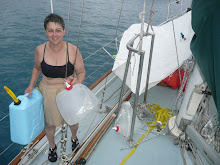
After five months of charitable weather, we finally received a serious downpour. Julie helped us collect over 50 gallons of rainwater to refill Pax's water tanks.
Best restaurant in Toau.
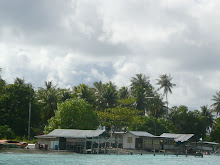
On this tiny motu is a family who has started a pearl farm. When six sailboats arrived at the same time, we were all invited to dinner and received lessons in black pearl cultivation.
Toau

Julie Golding joined us on Fakarava and sailed with to the motu of Toau.
Pax at a well deserved rest.
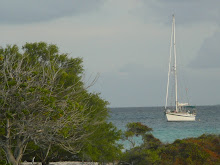
This sailboat has brought us safely over 4000 sea miles.
On our way to the Tuamotus.
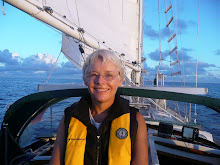
500 miles south of the Marquesas are a chain of islands that were deadly to ships until GPS arrived. Navigation in and around the motus is now possible even for the neophyte sailor.
Tahanea Sunset
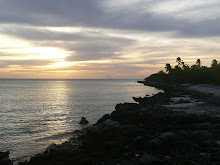
We arrived at Tahanea after a lengthy passage from Marquesas. We had almost no wind and the South Pacific looked like a lake for most of our passage.
Captain Brad

This man has fulfilled his dream -- take on a significant ocean sail with good friends.
Elena Leonard joins the crew in the Marquesas.
Sailing instructor Elena Leonard who teaches at Windworks joins Pax for the trip to the Tuamotus.
Elena and the Sea of Torpor
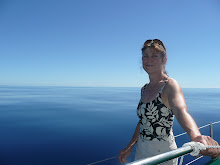
Once in a great while the wind dies completely. This is indeed the South Pacific, not the top of clouds.
Ua Pou

The spires in the middle of this island are inspiring. Princesses are surely hidden in there somewhere.
Surprise at Sunrise

The supply ship arrived in Ua Pou at 6:00 a.m. The little sailboat in front of us was about six feet away from the Aranui's hull when it dropped anchor. A close call.
Anaho Bay on Nuku Hiva

The Captain and First Mate spent nearly three weeks here. Absolutely idyllic.
Sally at the helm

Six months into the passage, the First Mate has gained some confidence.
The Captain at Sunset near the Marquesa Islands
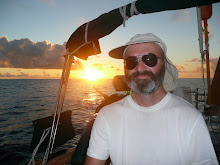
This captain has been the chief navigator, engineer, and trouble shooter.
The dolphin escorts
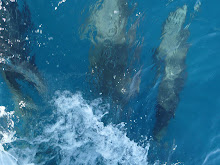
Dolphins escorted us into Nuku Hiva. Their friendly faces were welcome additions to Pax's bow.
Lal Sullivan in Nuku Hiva

Lal Sullivan served as Pax with distinction as relief captain and chief weather officer.
Herman Melville jumped ship here.

Author Herman Melville spent months hiding out here when he decided to jump ship from his whaling vessel. A beautiful spot indeed.
March 21, 2008 -- The Captain and Crew of Pax Vobiscum send our love.
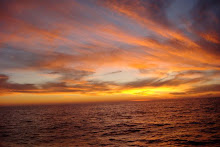
We're on our way to the Marquesa Islands! We'll reconnect with you all in a month. Much love from Sally, Brad, Lal and Sandy. Thanks to Gene Carlson for the photo.
Old Glory and the Companion Flag

March 16, 2008. Pax Vobiscum was named in memory of Brad's father, James Holmes Bagshaw. When we fly the US Flag we do so in honor of Brad's father and also my father, William Paul Geisler, both veterans of WWII. We fly the Companion Flag in conjunction with our country's flag because it is a reminder to us that peace begins at home, and how we act and respond in this world are conscious choices we make minute by minute every day.
Sandy holding down the starboard side.

Sandy assumed responsibility for selecting and purchasing the fishing gear. We are set. Here he's contemplating the first lure and leader combination.
By this time next week, we're on our way to the Marquesas.
A new third cleat on the starboard side proudly awaits the foredeck crew; the cockpit has a fresh coat of paint, the stainless steel has been shined, the plastic windscreen has a new coat of plastic cleaner and the windows have been washed and resprayed with GlassX. Gene Carlson was the inspiration for the last bit and we give thanks.
At any rate, I started thinking while I was on my knees again squirting marine adhesive under the toe-rail that cruising is serious work. Not that I'm complaining, mind you, but the image and the reality do not sync up.
San Jose del Cabo
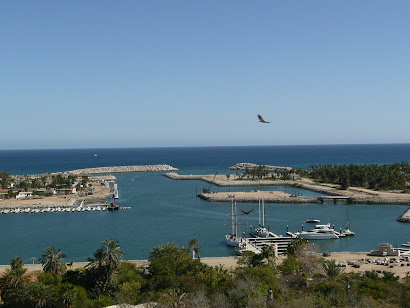
March 10, 2008: We are in the marina in San Jose del Cabo called Puerto Los Cabos, a beautiful new marina in the midst of a planned development. This place is extraordinary -- we've had perfect weathe for three weeks, about 80 degrees during the day, dropping to mid-50's at night so it stays cool. The marina is one of the first parts of a new development that looks like it will be world class in about another 5 years.
The Puerto Los Cabos developers have dreamed big.

Much of the infrastructure is already in place. The Puerto Los Cabo marina for example is useable and perhaps half completed. It is a fine place for our sailboat and we recommend it and the management highly. Around the marina are palm tree lined streets, beautiful plantings, and as this sign shows, grand haciendas and golf courses are already under construction and many more are coming. Check out the photo to the right to see what's behind the sign.
Looking northwest from the top of the hill behind the marina.
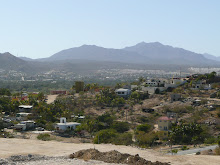
The area around Cabo and San Jose del Cabo is being developed with multi-million dollar homes,golf courses and everything for the super wealthy. The Mexican government is supporting the big development, but fortunately is requiring some sensible additions such as reverse osmosis water systems and good landscaping. The locals seem to be taking this in stride and have learned that Gringos will pay dearly for everything from dinner to taxis.
Learning to fish.
March 8, 2008. Thanks to the Cabo Costco (yes, there is one that looks remarkably like the ones in Seattle), we are filled to capacity with canned food and Starbucks Coffee to sustain us to the Marquesas. Nonetheless, we have illusions of catching fish to provide fresh protein along the way.
The catching fish idea is somewhat problematic since we have never done any ocean fishing. To be completely candid, we've never done any serious fishing at all.
I admit to fishing for bullheads off Neskowin's bridge as a seven year old, and tried my hand at fly fishing a few times, where a companion ended up with a #4 Red Humptulip in my earlobe, but I may have caught and consumed a grand total of a dozen fish.
I wish I had David James Duncan's experience (of The River Why fame), but I don't. And neither does any of my crewmates who are making the Marquesa leg with us. Among the four of us who will be sailing for 30 days in camping conditions, not one of us has ever usefully fished.
There's Brad from the fishing town of Gloucester who frequently represents fishermen in the courtroom, the Rev. Sanford Webster Brown Jr. who is a methodist minister and technically a Fisher of Men, Lal Sullivan who is a marine biologist and on the last leg dissected a small squid on our dining table for its educational value, and me who is a Boise cow girl, and none of us has experience tying a bimini knot to a swivel to leader to a lure. This, we're told, is critical.
To help us along, we bought an excellent book called the Cruiser's Handbook of Fishing by Scott and Wendy Bannerot. They have created a helpful guide for the uninitiated showing everything from how to tie knots to what types of lures and equipment to buy. Although their writing is clear and the illustrations useful, it is almost overwhelming nonetheless -- so many warnings about 'do it right or don't do it at all.'
One of the best aspects of sailboating is that so many people are willing to help when asked, and many of of new neighbors have helpfully shown me what they use -- very fancy rods, reels, and squid-y looking lures that come in pink and green, snub-nosed or not, various weights of leader and line, with planers and not, with feathers or shag.
These guys are competitive fisherman who WANT to catch marlin. Not me. I want to catch a little tuna. Or maybe a little dorado. But figuring out how to hook something small enough to handle, how to get it on board, how to filet it without getting fishy substance all over the cockpit are the challenges.
I seek the minimalist's approach to fishing, maybe handlines with yoyos and rubber snubbers as contrasted to the spiffy rods and reels my marina colleagues use.
And, assuming against all odds we brought an actual fish on board we need to know what's next.
To this end, I walked over earlier this week to the public fish pier where some local pros were filleting the gringo's fish as they came into dock from their charter expeditions. I learned a great deal from them and am including some photos to show their techniques. They make it look easy. I'm told by everyone it's not and I can expect to make hash out of the first fillet efforts.
Sierra Mackerel --the local favorite.
Interesting to watch; first a slit behind the gills, a line down the belly to the end port, up the backbone and voila. The perfect fillet. I've been told repeatedly that my first efforts will end up looking like a dog's breakfast but not to worry. Many dozens of times later I may learn to fillet with some penache.
Pete Tenney and Gina Bettelli

February 29, 2008. Happy Leap Year! Pete and Gina join us in San Jose del Cabo.
Pete and Gina on Pax

We're hoping this dynamite duo will join us in French Polynesia.
Pete Tenney and Gina Bettelli take on the Sea of Cortez
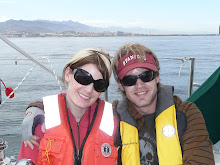
March 1, 2008: An easy day on the Sea of Cortez.
Pete Tenney and Gina Bettelli

Gina shows Pete the finer points of arm wrestling. My son Pete and our lovely friend Gina Bettelli grace the beach at the Presidente Intercontinental.
Some interesting critters
A White Egret
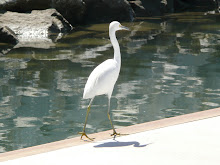
This fellow walks the dock watching for fresh sushi.
The Road Runner
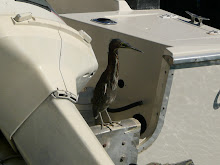
We startled this guy walking down the dock and he took refuge on this neighboring boat.
The Magnificent Frigate Bird
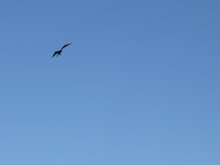
These birds have mid-air dogfights with seagulls over food.
Caught in the middle of a labor dispute...
Thanks to my son Pete, his girlfriend Gina, and Gina's folks Mike and Diana Bettelli from Seattle, we were treated to a fancy timeshare called the Grand Mayan in San Jose del Cabo for a few nights. Since we had not seen a been on land for several weeks, we were pretty enthused about a bed with real sheets and a hot shower that was not restricted by the number of quarters in our pockets.
But there was much spice to our hotel stay -- local labor problems erupted at the Grand Mayan. Pieced together through our limited Spanish and Management's pretty good English, is that the hotel workers are represented by a national union, but a local union with support of the newly elected Baja president was challenging the national union's authority. The local union wants to replace the national union with their own, and chose the day we were to check in as their Day of Action.
When we went to check in Friday afternoon with only our toothbrushes and four bags of laundry in the car -- our hope being that washing facilities would be inside, we were barred at the door by the union protestors and told by Mayan management to follow a van to the back side of a golf course clubhouse a couple miles away from the hotel.
We followed at high speed up and around some dusty roads, feeling a bit like something out of the latest 007 movie. When we arrived at the back door of the clubhouse --literally driving up the golf cart paths at a few points-- we found 50 or so other would-be vacationers stacked up around tables, and asked to wait by a lovely Mayan Palace employee.
Wait we did, 3:00, 4:00, 5:00, 6:00, 7:00, 8:00 with no new information but assurances that negotiations were underway. To Brad's and my amusement, one of the Mayan employees announced to the crowd "the corporate lawyer is flying in from Puerto Villarta and it should be resolved quickly." (We know how effective those corporate lawyers can be.)
By now more would-be Grand Mayan vacationers were arriving from the US and the vacationers were getting more and more restless. Many had already been traveling for 16 hours and their patience was growing thin. It was an interesting scene; some calm, some demanding to know their alternatives for the evening, some growing hostile. Since we always had the return-to-the-sailboat option, we could watch the show unfold.
Eventually, the poor Mayan employee who seemingly had little or no support from corporate headquarters was overwhelmed by the vacationers, and a plot was hatched.
The protesting union was letting in those guests who were already in the hotel. The idea was to give the in-coming guests ID badges at the golf club but required all to leave their luggage behind. Some new-comers were then taken by taxi and dropped off several blocks away in the dark so they could walk up together as if they were returning from town.
Since we already had a rental car, we were told to drive up to the front door entrance, take in nothing but my backpack as if we too had been gone for the day, and walk in like we owned the place.
This hotel is nothing like I've experienced anywhere in the US. The entrance to the hotel lobby is almost completely dark and when entering after a bright day, it's pitch black. Two giant Mayan gods look down upon visitors as they enter, with water spilling on either side of the walk way. I thought to myself that Risk Manager Jennifer Hills would have something to say about this.
And on the night we entered, it seemed especially dark -- I felt like I was in the middle of some Indiana Jones sketch where I was to walk by these 50' statues without falling into the pits on either side.
We did get into the hotel that night, but already it was running with limited staff. The next morning we rose early to drive to La Paz where we met with a group of other cruisers who are heading soon with us to the South Pacific.
We returned to the Grand Mayan about 8 PM to be told the doors were now barred to all guests and no employees were left inside. With a little help from the last two managers on the scene, we were allowed to enter, grab our toothbrushes and few items left in the room, and leave again quietly.
This last trip passed the Mayan gods and upstairs was about as eery as any Twilight Zone ever, and straight out of the scenes from Jack Nicholson's The Shining.
The Grand Mayan has been gracious to all, putting us up in a neighboring "all inclusive" hotel where the temptation is to eat and drink way too much. Although the vacations of some Grand Mayan patrons have been unfortunately impacted, for us, it all adds greatly to the richness of a sabbatical where surprises are the best part.
Crew buddies Lal and Sal arriving in Cabos San Lucas
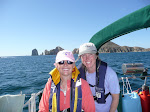
February 17, 2008: This shot should make Seattle Windworks Sailing smile. Lal teaches at Windworks, and Sally took lessons there. We're both sporting our Windworks hats to make the point that their theme "Sail Like a Girl" really means something good. Welcome to Cabo.
Morning in Cabo San Lucas

We arrived in Cabo at midnight and dropped anchor. The next morning the arches were radiant in the sunlight.
Dolphins on the bow
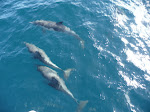
February 15, 2008: Just outside Magdelana Bay we were escorted by dozens of Pacific Dolphins. This is literally a shot from the bow.
From San Diego to Cabo....
Two weeks ago we left San Diego. Lal Sullivan and Gene Carlson were terrific shipmates and we agreed that once Pax Vobiscum was snugged in a Cabo marina we'd produce a "day in the life" of being on board a 39' sailboat with four good friends. What follows are some photos of our work day and shared responsibilities on board.
Gene, Lal, Brad and Sal

In Magdalena Bay, where we anchored over night and spent time with the gray whales. Gene disembarked here, and headed back to Los Angeles to meet friends he had met during Viet Nam. Gene brought good skills, journalistic insights, and much charm to the crew. We were sad to see him leave.
Gene's leaving to join his Navy buddies.

Getting off in Magdalena Bay, panga to San Carlos, bus to LaPaz, bus to Cabo....a two day trip. Gene, we loved having you on board.
Getting through customs
The watch rotation
The best part about night watch in the ocean is the chance to look at stars and constellations. Without the reflection from cities, the brilliance of the constellations is breathtaking. Sally and Gene spent hours identifying and locating the stars of first magnitude in the vicinity of Orion, Ursa Major, and Cygnus.
Brad working on the preventer

The preventers are set up on both sides of the boom, permanently set up with a three to one mechanical advantage so the boom can be controlled going downwind from the cockpit. Chafing is a continuous issue and Brad and Lal detected the sign of early chafing and changed the orientation of one of the blocks to fix the problem.
Laundry Day
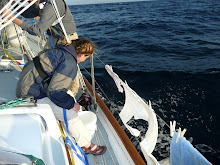
For ten days we're washing ourselves and our clothes in a bucket, and hanging the washing on the lifelines.
Inelegant maybe, but functional.
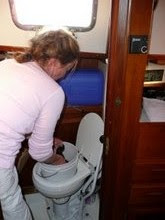
Lal and I decided we would have made reasonable pioneer women. Washing poses a challenge: it's necessary, it uses our fresh water supply, and it requires both soapy water and fresh rinse. The solution: we use a small bucket balanced in the head. Wash first with salt water in the galley sink then rinse with a quart or two of fresh water and dry on the lines above.
The water maker.
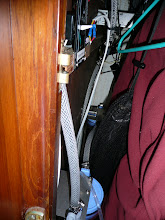
The Katadyn water maker is a clever bit of engineering that provides fresh water from ocean water. Brad put the pump in the settee and the filters into a vee berth closet. The result is approximately 1.5 gallons of fresh water ever hour its running. It requires about 5 amps of battery power per hour and the water is delicious.
The water is made below and hauled up on deck.

We didn't plumb the water directly into the tanks because of the initial concerns about the system. It's working extremely well and one of the additions in the future will be to direct the freshly made water into the tanks. What convenience!!
Fresh water into the tanks.

Provisioning for Two Weeks
Lal Sullivan and Sally spent eight hours Sunday making food and supply lists, purchasing the same, and with the help of Gene and Brad got 16 bags of groceries and supplies into Pax in the pouring rain. Only one can of orange juice and another can of mushrooms were dropped overboard in the disintegrating brown bags. Another good reason to bring canvas bags to the grocery store.
Dinner time

Cooking when the seas are rockin' is a bit of a challenge. For most of the time the seas were kind and we had some decent eats. A line from Moby Dick became our dinner bell..."Grub ho!"
Lal Sullivan and Sally preparing the provision list

Imagine the pain of homelessness...
Up the mast
The ladder is complete!
Mutiny Averted
Arriving in San Diego
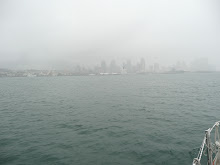
Looks more like Seattle....
Untethered at last
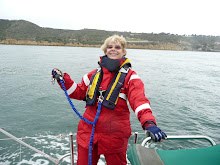
The harness and tether -- necessary but a pain.
Scott Wyatt preparing for the midnight watch
Julie Golding at the helm

Point Conception at Dawn
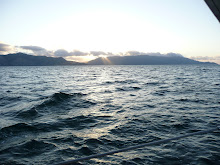
Leaving San Francisco at dawn

The Fast Passage Specifications
LOA: 39'6" (12.0 m.)
LWL: 33'6" (10.2 m.)
Beam: 11'2" (3.4 m.)
Draft: 5'6" (1.7 m.)
Ballast: 7,500 lbs. (3,402 kgs.)
Disp: 22,000 lbs. (9,979 kgs.)
Sail area: (100%) 735 sq.ft. (224 sq.m.)
Ballast/Disp: .34
Disp/Length: 261
SA/Disp: 15
Designer: William Garden
Specifications from http://old.cruisingworld.com/ssbk/faspas39.htm
Wednesday, February 13, 2008
We are 30 to 40 miles offshore and are still heading for Bahia de Magdalena where we plan to arrive during the daylight tomorrow. We were motoring this morning in very light air and are now sailing in a 6 to 10 knot westerly.
All onboard are content and well-fed. The sun is shining and it is now in the 70's, offshore. The evenings remain cool, but the long underwear has been put away. No showers for a week now. We may not be old salts, but we are beginning to smell like them.
Brad and Sally

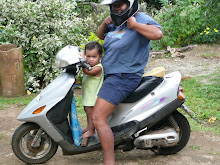
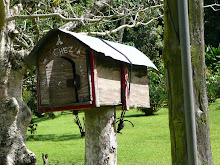
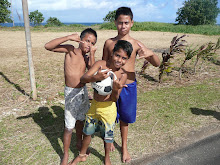
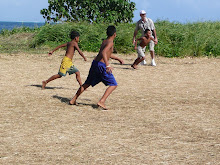



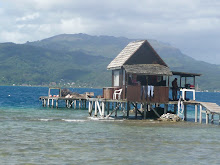

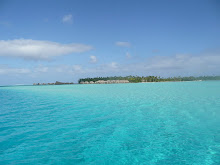


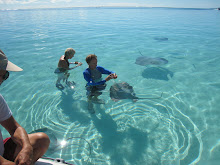
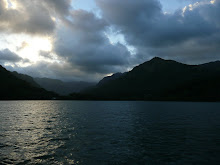



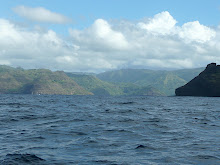
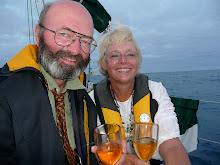
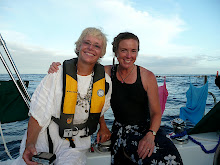
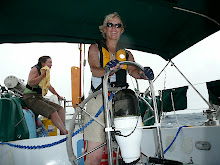

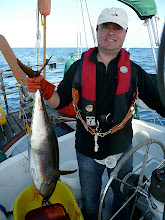



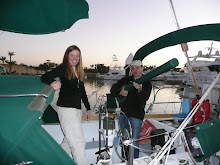
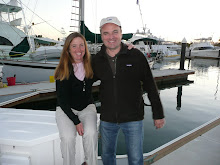
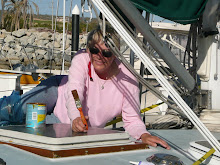
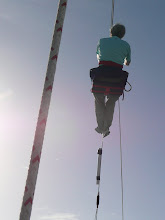

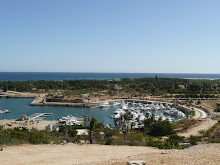
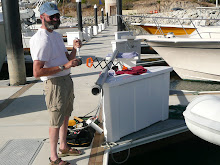


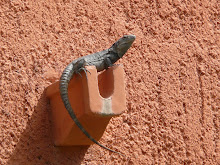
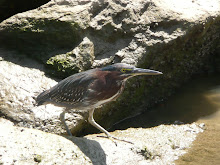
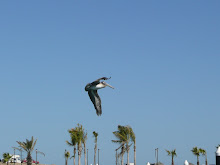

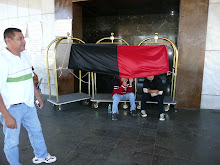
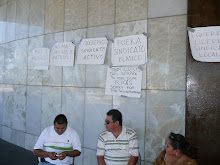
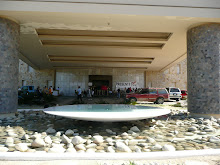
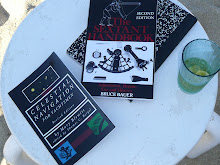
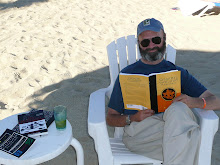
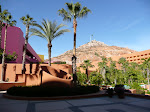
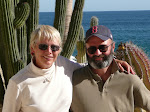


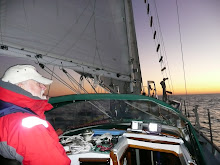

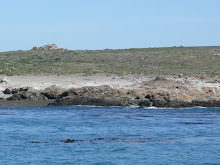
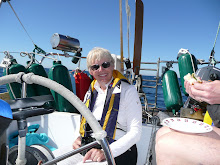

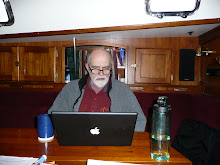


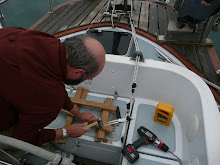
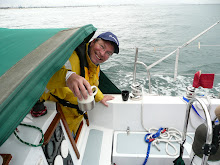

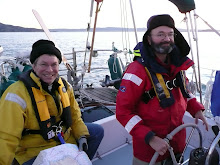





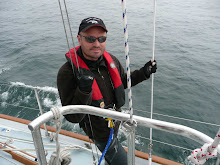
1 comment:
Happy Valentine's Day. I just figured out how to read your postings since San Diego. All sounds good. 'glad to hear it's warming up. May you see a pod of whales for your birthday tomorrow. Love, Barb
Post a Comment